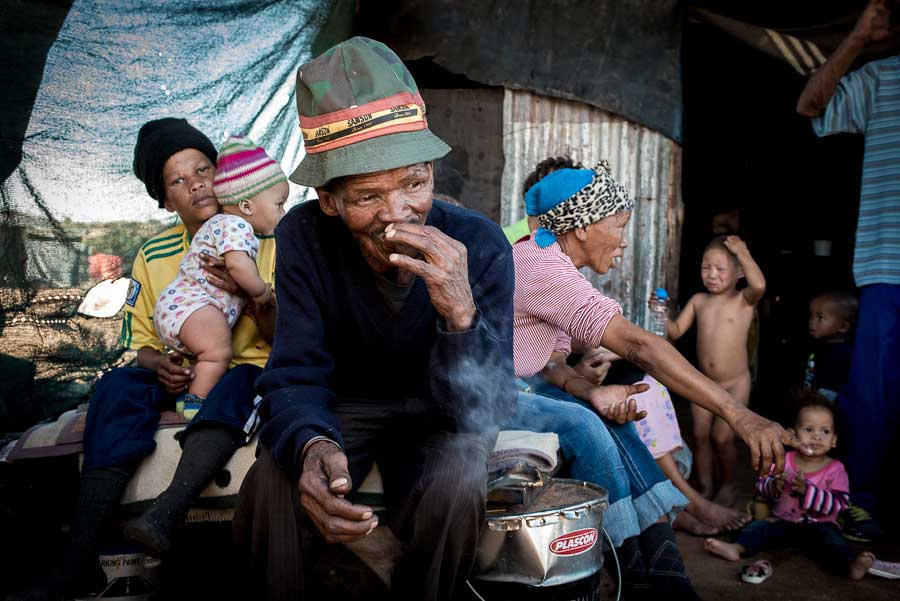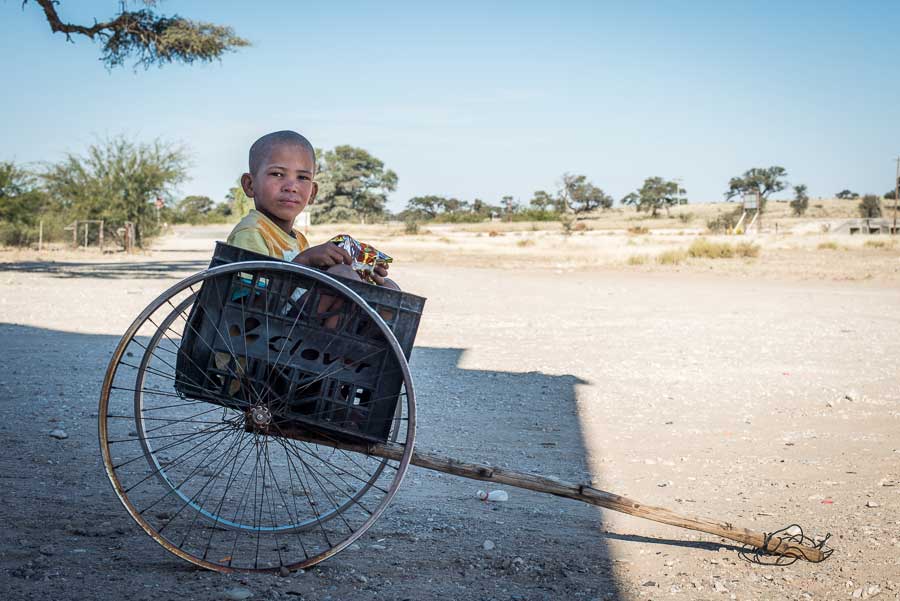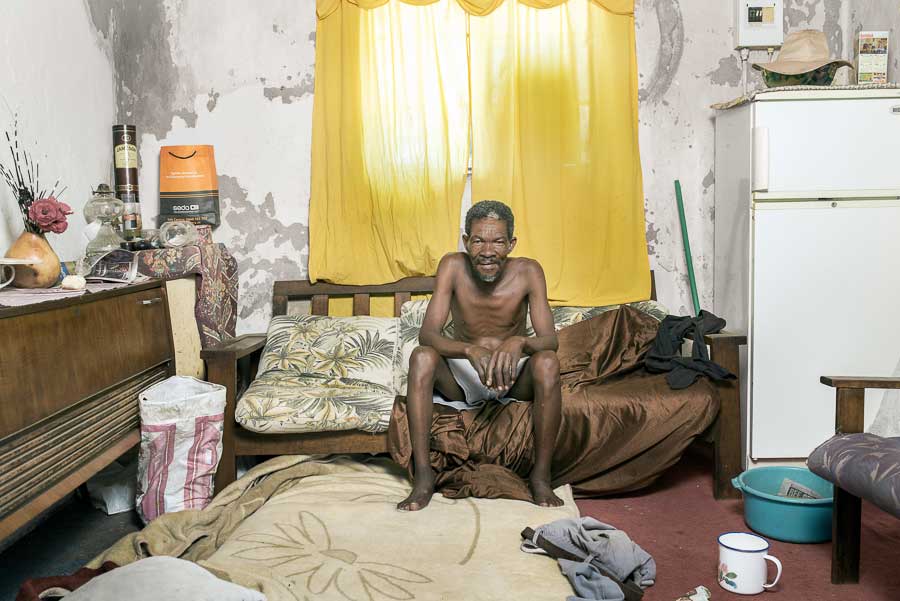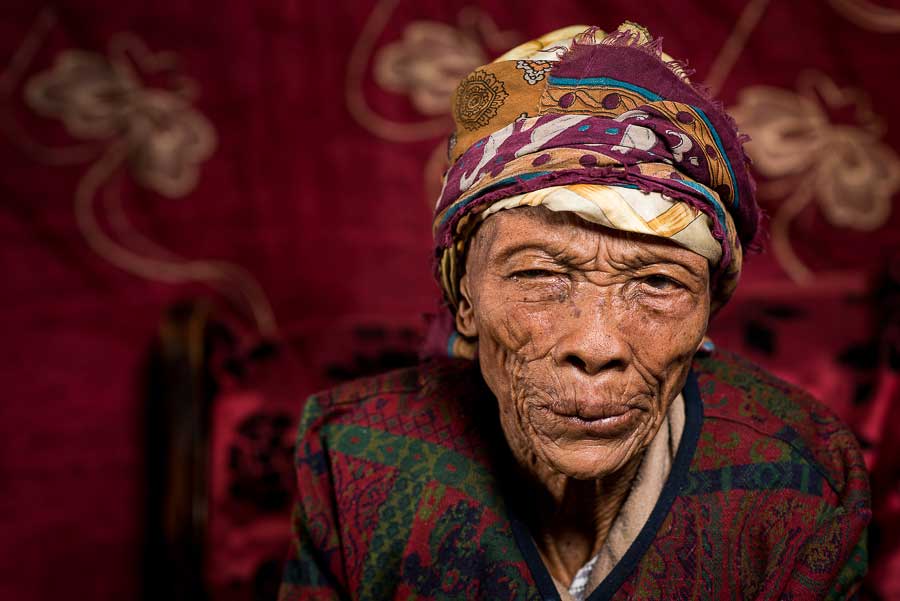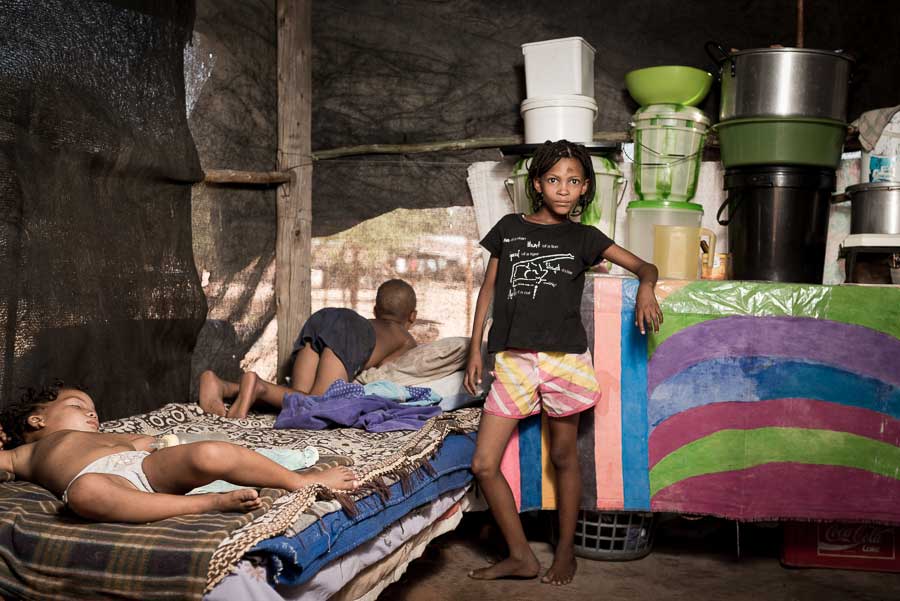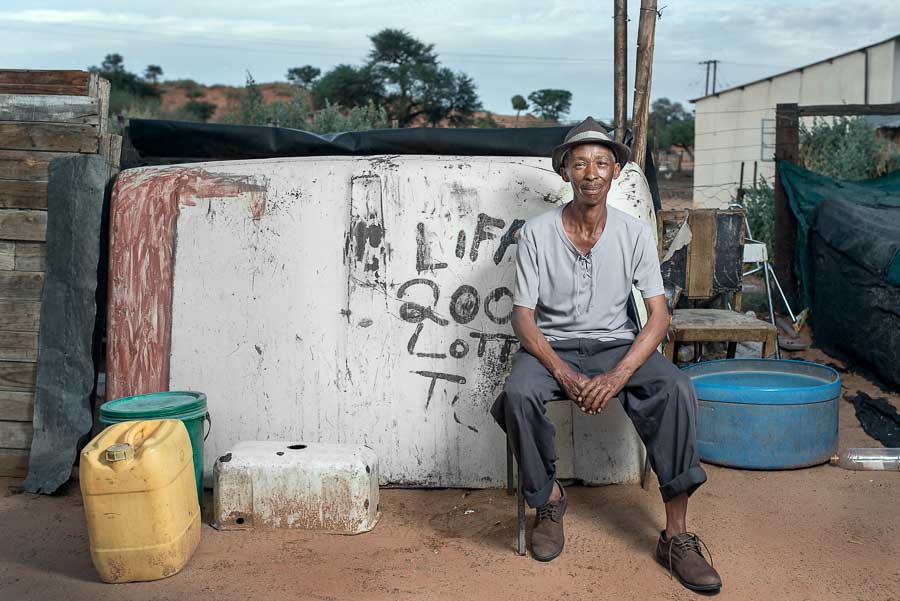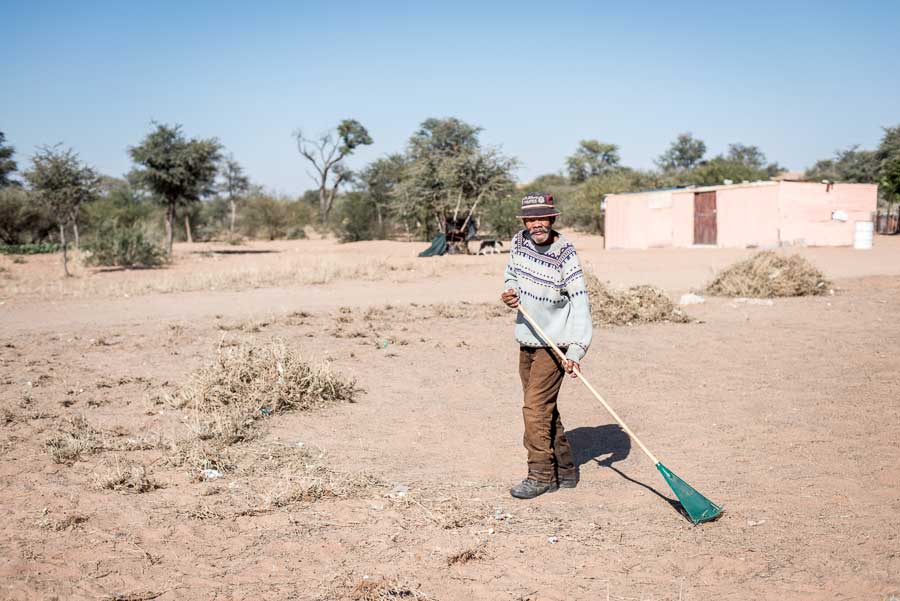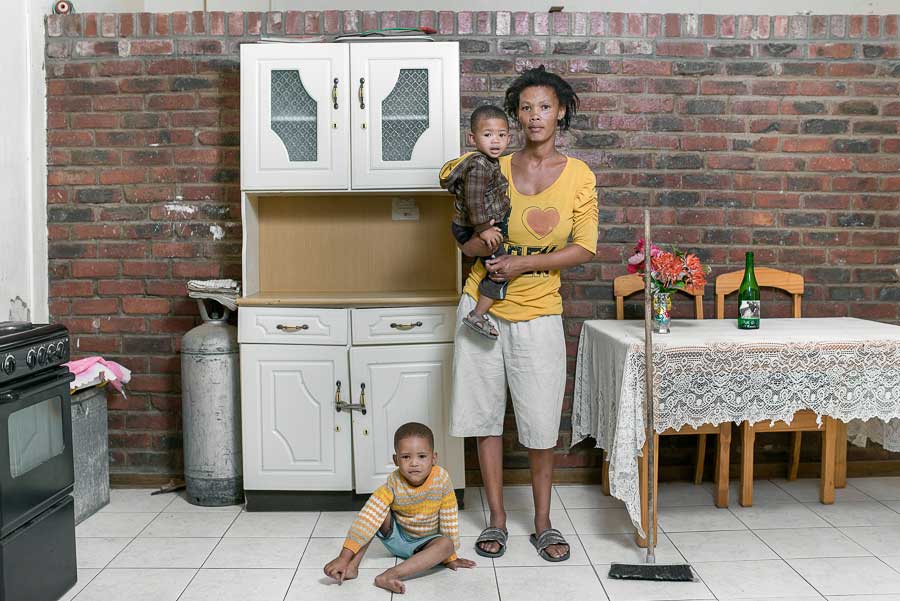In 1995 a group of traditional Khoi-San (Bushmen*) made a claim to the South African government for the return of the land from which their ancestors were forcibly moved to make way for the Gemsbok National Park (now part of the Kgalagadi Transfrontier Park).
To strengthen the claim they invited other’s with a demonstrable lineage to form a new clan called ‡Khomani. In 2002 this new “community”was awarded land ownership in the park, although denied the right to live there. In it’s place they were given the right to live a traditional lifestyle on farmland near the park borders but without support from the government.
The most populated of these farms is Andriesvale. In the middle of the Kalahari Desert, it is 180km to the nearest town and hospital. Contrary to popular belief, even the most traditional of the ‡Khomani do not live in skins, journeying out to hunt wild animals and gather plants. Instead they wait for the change they have been promised, the electricity, houses and services that they still expect but have so far been denied. The animals that they would like to hunt are inside the park and the little money that they have comes in the form of small government grants or inadequate wages from piecemeal employment. The money doesn’t go far and is quickly used to support large extended families. It is spent on food, tobacco and alcohol from the bottle store that the nearby tourist lodge has conveniently opened to cash in on the vulnerability of the community.
This series is an exploration of the changing visual nature of identity, a challenging of redundant social stereotypes and a reminder of South Africa’s forgotten, First People. [Official Website]
*The term ‘Bushman’ is used in accordance with the accepted terminology of Survival International, the leading NGO working for the rights of Tribal People around the world.
About Thom Pierce
Thom Pierce is a photographer based in Cape Town. Originally from the UK, he has lived in South Africa since 2009. Central to his work is the use of photography as a way to engage with the world around him. He uses the camera to explore issues of cultural, social and historical significance and to discover the diverse and rich country that he now calls home.



